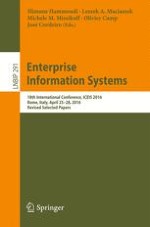This book constitutes revised selected papers from the 18th International Conference on Enterprise Information Systems, ICEIS 2016, held in Rome, Italy, in April 2016.
The 23 papers presented in this volume were carefully reviewed and selected from a total of 257 submissions to ICEIS 2016. The volume also contains one invited talk in full paper length. The papers selected to be included in this book contribute to the understanding of relevant trends of current research on enterprise information systems, including issues with regard to enterprise engineering, heterogeneous systems, security, software engineering, systems integration, business process management, human factors and affective computing, ubiquitous computing, social computing, knowledge management, and artificial intelligence.
